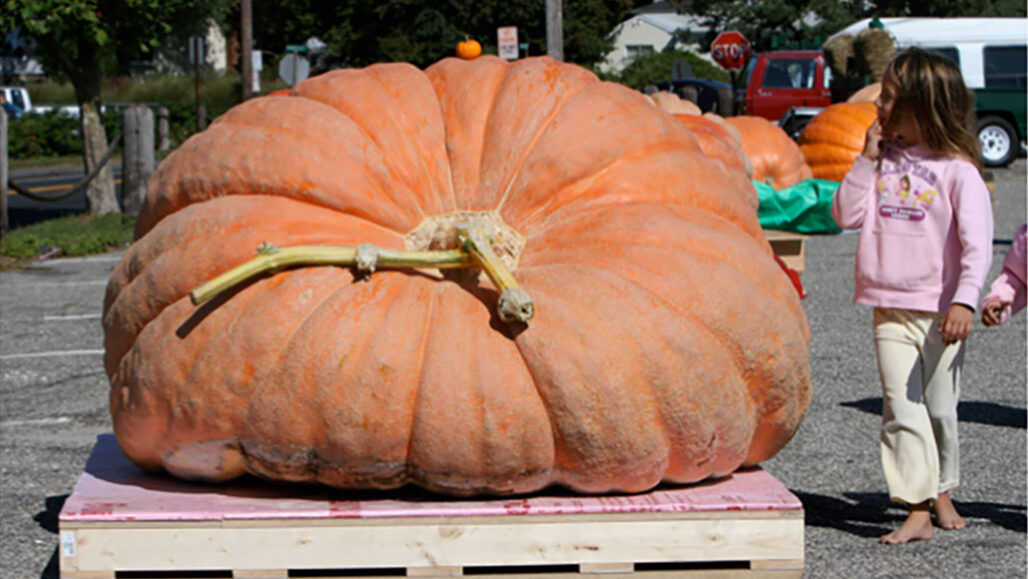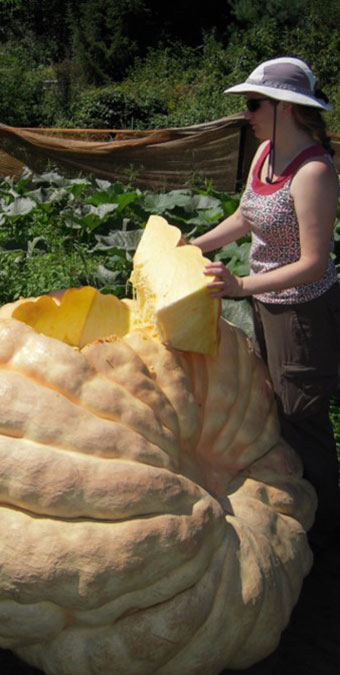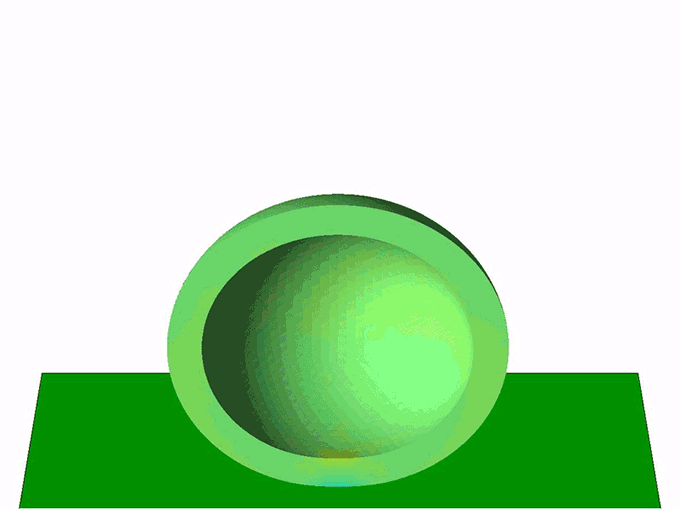Here’s how giant pumpkins get so big
But Cinderella’s pumpkin carriage would never be a comfortable ride

Giant pumpkins can become really big. But while they grow very wide, they don’t get very tall. Gravity simply keeps them grounded.
D. Hu
Cinderella has to get to the ball. How to reach the palace on time? Her fairy godmother waves a wand, and poof! A nearby pumpkin morphs into a beautiful carriage.
The fairy godmother is a magical stretch, but massive pumpkins are very real. The huge ones you might see at your local fall fair are Atlantic giant pumpkins (Cucurbita maxima). It’s not the species that we eat and carve, says Jessica Savage. A botanist at the University of Minnesota, in Duluth, she’s someone who studies plants.
The Atlantic giant truly is a goliath. People compete every year to produce the largest. One grower in Germany set the record for the world’s heaviest in 2016 with a squash that tipped the scales at 1,190.49 kilograms (2,624.6 pounds). It weighed more than some small cars.

What’s really astonishing, Savage says, is that pumpkins can get that big in the first place. After seeing photos of giant pumpkins at the Topsfield Fair in Topsfield, Mass., she became fascinated by a problem. A transport problem.
A pumpkin has to transport water, sugar and other nutrients to swell up the fruit. (Yes, a pumpkin is a fruit.) Water needs to move up from the roots. Sugars produced by photosynthesis in the leaves need to go down to the fruit and roots. To do this, plants use xylem and phloem. Xylems are vessels that transport water from roots to a plant’s stems, fruits and leaves. Phloems are vessels that transport sugars from leaves to the fruit and roots.
Giant pumpkins need a lot of water and sugar, and they need it fast. A typical giant pumpkin grows from seed to huge orange squash in only 120 to 160 days. At peak growth, it’s putting on 15 kilograms (33 pounds) every day. That’s like daily adding a two-year-old child to its mass. And all of that mass must move through the stem, Savage notes. Most of the time, the stem is so narrow that you can still easily get your hands around it.
To study how pumpkin stems transport so much food and water, she asked growers of giant pumpkins to donate small slivers of their competition fruits. She also got any pumpkins that burst before they could be judged. She even got small pumpkins that farmers had rejected before they plumped up. (To grow a massive pumpkin, farmers will only let one pumpkin on each plant reach full size.) She also grew a few of her own.
Savage took a close look at the stems, leaves and pumpkins and then compared them to those from other large squashes. Giant pumpkins don’t produce more sugars, she found. And their xylems and phloems don’t work differently. The titans just have more transport tissue. “It’s almost like there’s this mass growth of the vascular tissue in [the] stem,” she says. Extra xylem and phloem help the stem pump more food and water into the fruit, leaving less for the rest of the plant.
Savage and her colleagues shared their findings five years ago in the journal Plant, Cell & Environment.
Pumpkin or pancake?
The giant pumpkins in competition don’t have the nice round shape you’d expect. “They’re not beautiful,” says David Hu. “They’re saggy.” Hu works at the Georgia Institute of Technology in Atlanta. A mechanical engineer, he studies how things move and grow.

Giant pumpkins get flatter and flatter as they expand in size. Gravity just weighs them down, Hu explains. “They’re elastic. They’re springy. But as they get bigger, they get heavier, and the spring isn’t strong enough,” he says. Pumpkins end up squashed under their own weight. And if they grow large enough, they will even grow a small arch underneath. “It’s like a little dome in the middle,” Hu says.
The wall of a pumpkin doesn’t thicken much as the fruit gets really big. Small pumpkins can support up to 50 times their own weight without breaking, Hu says. But “big ones can barely support their own weight,” he notes. “They’re at their limit.”
By taking giant pumpkin samples and squashing normal-sized pumpkins to see how much weight they could take, Hu came up with a model for how a giant pumpkin spreads as it grows. One big enough for Cinderella, he says, would never be a good vehicle. Even if growers were to double the current weight of giant pumpkins, those fruits would just get flat.
“She’d have to lie down,” Hu says of Cinderella. And her ride, he points out, “definitely wouldn’t be super elegant.” The pumpkin would probably also need much longer to grow. “If we wanted it eight times bigger,” he says, “we’d need an eight times longer season — about eight years.”
If you could grow a pumpkin in outer space or under water, it’s height would no longer be a problem, Hu notes. “Ultimately all the [flattening] forces are due to [Earth’s] gravity.” Hu and his colleagues published their results in 2011 in the International Journal of Non-Linear Mechanics.
But while a pumpkin carriage might not be a realistic way to travel, Savage notes that Cinderella might have had other options.
Giant pumpkins, after all, can be hollowed out to make pretty good canoes. In fact, there’s a yearly boat race in Windsor, Canada, open to giant pumpkins only. So if the prince’s castle has a moat, Cinderella might be able to make a grand entrance from a pumpkin after all.







